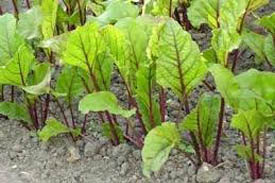Gardening: Cutworms
 We have been leaving our fluorescent kitchen window light on at night to attract the Miller Moth, which in its larval state eats our starter garden plants. The light attracts the moths, which in turn attract our bats. Bats consider moths tasty tidbits. There are other options too. Read on.
We have been leaving our fluorescent kitchen window light on at night to attract the Miller Moth, which in its larval state eats our starter garden plants. The light attracts the moths, which in turn attract our bats. Bats consider moths tasty tidbits. There are other options too. Read on.
New gardeners swept up with the array of beautiful plants sold in the garden centers, rush home for planting, and in a few short days discover all or most of the plants have been neatly cut off at the base and need replacement. It is a costly process to keep feeding cutworms; so, it is important now, while the plants are lying on the ground and you are still mad, to begin your revenge and preparation for prevention next season. At this point your garden is full of the eastern cutworm.
We are going to discuss organic controls. These controls are safe and will not harm you. The application of diazinon and similar poison controls will uptake into the plant tissues and add to your cancer risk. Avoid poisons in the soil. Think old time natural controls and common sense.
This season when you’re planting that tomato or pepper plant, or in fact any plant, take a small business card or piece of paper and make a simple collar around the base of the plant, pushing an inch into the soil. If you have no paper, you can take a twig and place it alongside the plant stem, inserting about an inch into the soil. The cutworm that comes up at night will have to wrap around the plant stem to chew its meal. With the collar or twig it cannot get a foothold – or worm hold – so to speak.
This summer and into the fall you will see big Miller moths flying around outside lamps. These moths lay eggs that hatch into cutworms. Cutworm larvae like to chew on grass roots first, and the fields are full of them. The old time practice of a bare earth garden, free of weeds, greatly reduces cutworm. If you let your garden get weedy, it will encourage cutworms. But then again if the fields are full, does it matter? Weedy type organic, natural gardeners will probably have a bigger share of cutworms, but as with traditional gardeners, the cutworm population can be reduced by tilling all the fall residue in the ground while the Miller moth is smelling her way to the weeds. This is a critical time, usually by September, to till under the excess vegetation and leave the bed “clean”. Later in the season when the Miller has passed its egg laying cycle, you can sow winter rye for a fall cover crop safely.
Now back to this season’s chewed plants that require replacement. Before you plant that new costly tomato seedling, dig an inch or so around the old plant stem. You will find the sleeping cutworm. Pull it out, and drop it in a bug bucket to feed your chickens later in the day. Check all your old chewed plants for the sleeping cutworm, or it will cut the new plants off, too.
Speaking of chickens, letting your chickens into the garden plot through the winter season and in the early spring before planting will greatly reduce any cutworms and other harmful insects. Chickens miss nothing and eat everything. They are the best “on the job” insect eater you can get. Some friends of mine use a movable chicken “creep” – a movable cage – over their raised beds to let the chickens clean up selected areas.
Modern science has afforded us with inexpensive bug “zapper” lights that can be put into the garden area. The bug lights that attract the Miller moths will zap them and really work.
Early spring tilling, fall tilling and the access to chickens, and perhaps pigs, make good clean up controls. Baits after planting can be a help too.
Make cutworm bait with 25% hardwood sawdust (not pine), 25% wheat bran, and 50% molasses, plus enough water to saturate the mixture. Spread the mixture in the areas adjacent to the plants. The molasses will attract the cutworms; the bran and sawdust will stick to the cutworm and make it helpless. Birds and morning sun will the rest.
God Bless
COPYRIGHT: 2009, Back2theLand.com, Mark Steel



